Nirmit Kumar, Senior Global Medical Strategy Leader at AstraZeneca, shared a post by Paolo Tarantino on X, adding:
“Great overview of the history of Antibody Drug Conjugates (ADC) and how its components (Antibody, Linker, Payload) work in complement to one another and have been designed over the years can help improve their efficacy and even safety events by Paolo Tarantino.”
Quoting Paolo Tarantino‘s post:
“How do we build a new generation of safer and more active ADCs for treating cancer?
By understanding how they actually work (and stop working). In this Cancer Discovery review, we retrace 40 years of ADC development, highlighting key lessons learned.
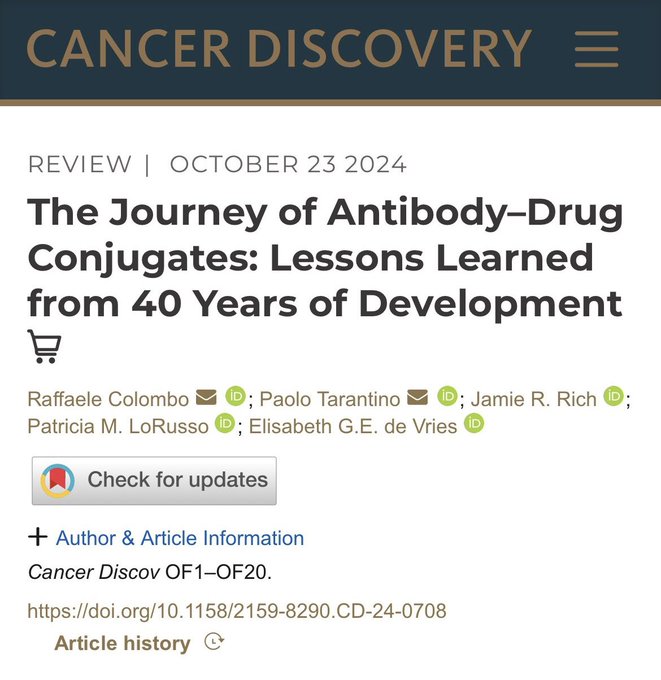
ADCs harbor 3 key elements: an antibody, a linker, a payload.
Since the 1980s, ADCs mostly harbored microtubule and alkylator payloads. More recently, topo1 inhibitors led to major strides in oncology. Yet, the field is now getting saturated. Payload differentiation needed.
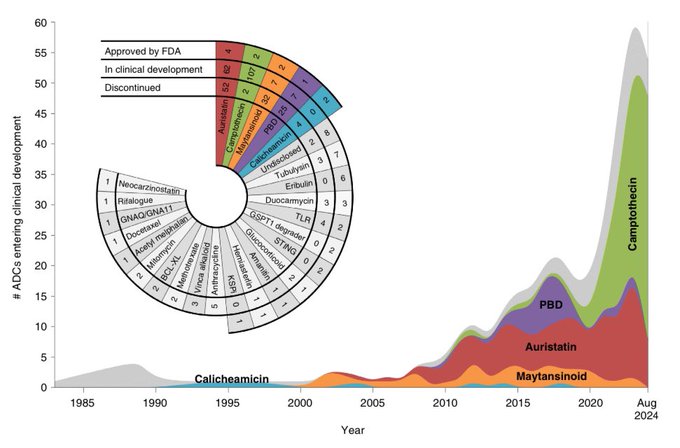
Notably, 40 years of development led to debunking of a common misconception. Indeed, most ADCs do not expand the therapeutic index of chemotherapy. Their tolerability is usually similar to chemo. Yet, they can make chemo much more effective, through an improved delivery.

A second important misconception is that ADCs are stable. None of the currently approved ADCs is really stable. Which is a good thing. The continuous, dynamic deconjugation of payload from the antibody is emerging as a critical feature that makes ADCs so clinically active.
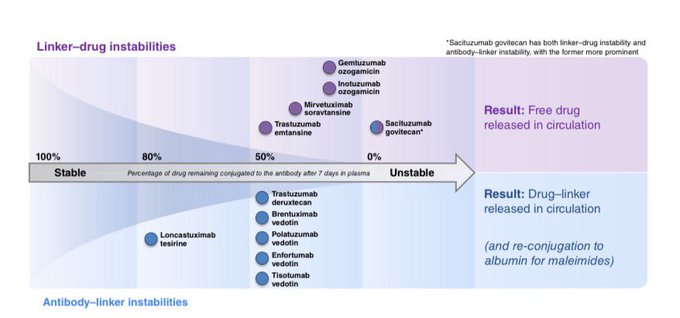
Indeed, it turns out that when you link a chemo payload to an antibody, the chemo acquires part of the PK features of the antibody. In short, you achieve an extended release of the chemotherapy, which is continuously released for days following each infusion.
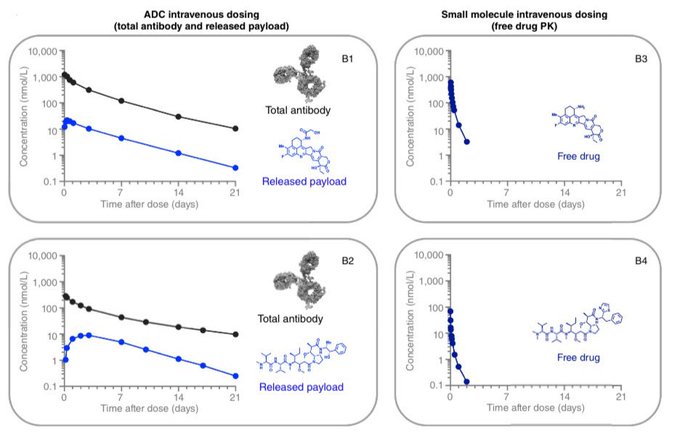
Upon this non-specific extended release, ADCs also enable a targeted delivery of payload. Notably, only 1% of the ADC reaches the tumor cell through target engagement. Yet, this can lead to major activity in cases where the target is highly overexpressed (eg. HER2+ tumors).
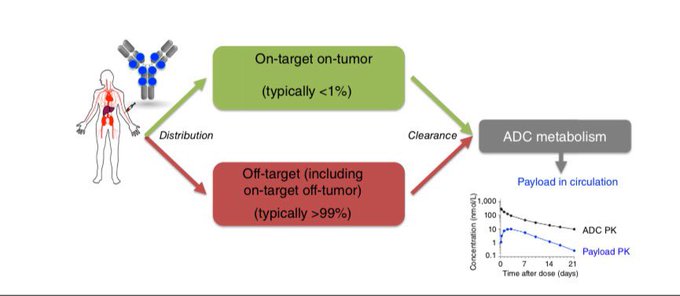
Yet, the above is just the tip of the iceberg. ADCs are complex. They also act via engagement of immune cells, blocking of oncogenic pathways, conjugation of payloads with albumin and multiple other MoA. Embracing complexity will be key to develop the new generation of ADCs.
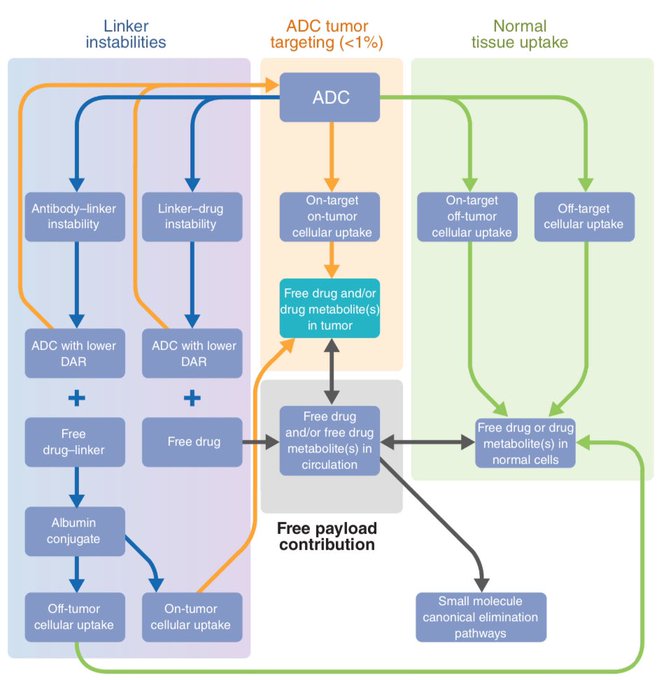
Their complexity translates in multiple challenges.
Three major ones:
– optimizing ADC sequencing
– minimizing toxicities
– developing better biomarkers
Addressing these 3 key challenges will be critical to advance the field of ADCs over the next decades.
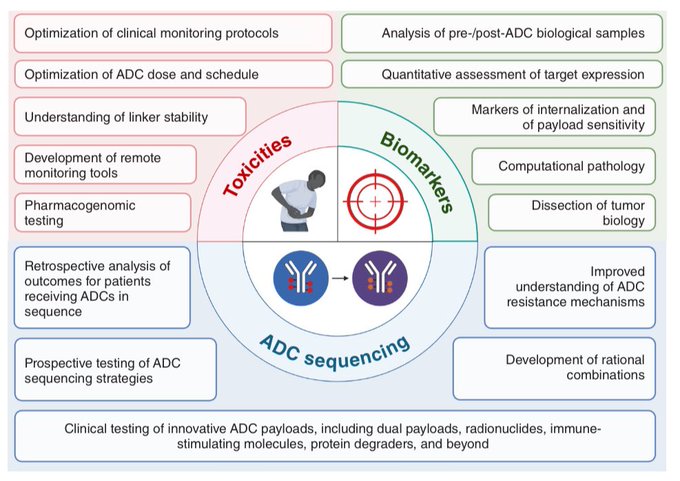
Can’t thank enough Raffaele Colombo for co-leading this review, Patricia M. LoRusso, Elisabeth de Vries for originally envisioning it, Jamie Rich and Sara Tolaney for the many insights during its development and the Cancer Discovery team for the outstanding editorial support at each step of its development.”
he Journey of Antibody–Drug Conjugates: Lessons Learned from 40 Years of Development
Authors: Raffaele Colombo, Paolo Tarantino, Jamie R. Rich, Patricia M. LoRusso, Elisabeth G.E. de Vries
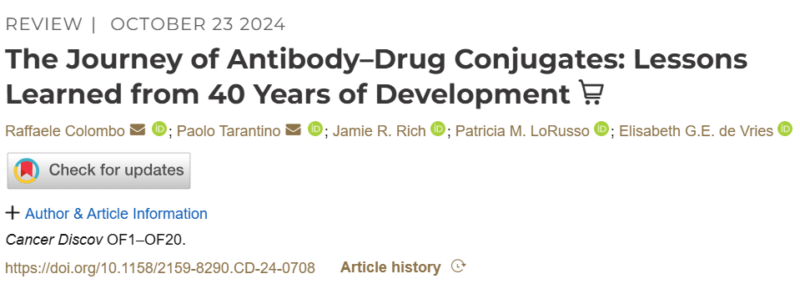
More posts featuring Raffaele Colombo and Paolo Tarantino on oncodaily.com
